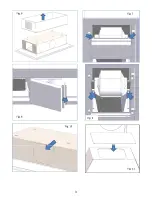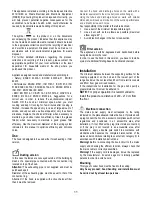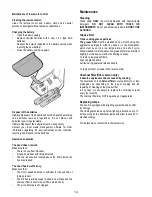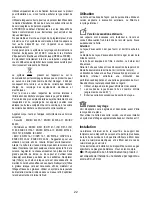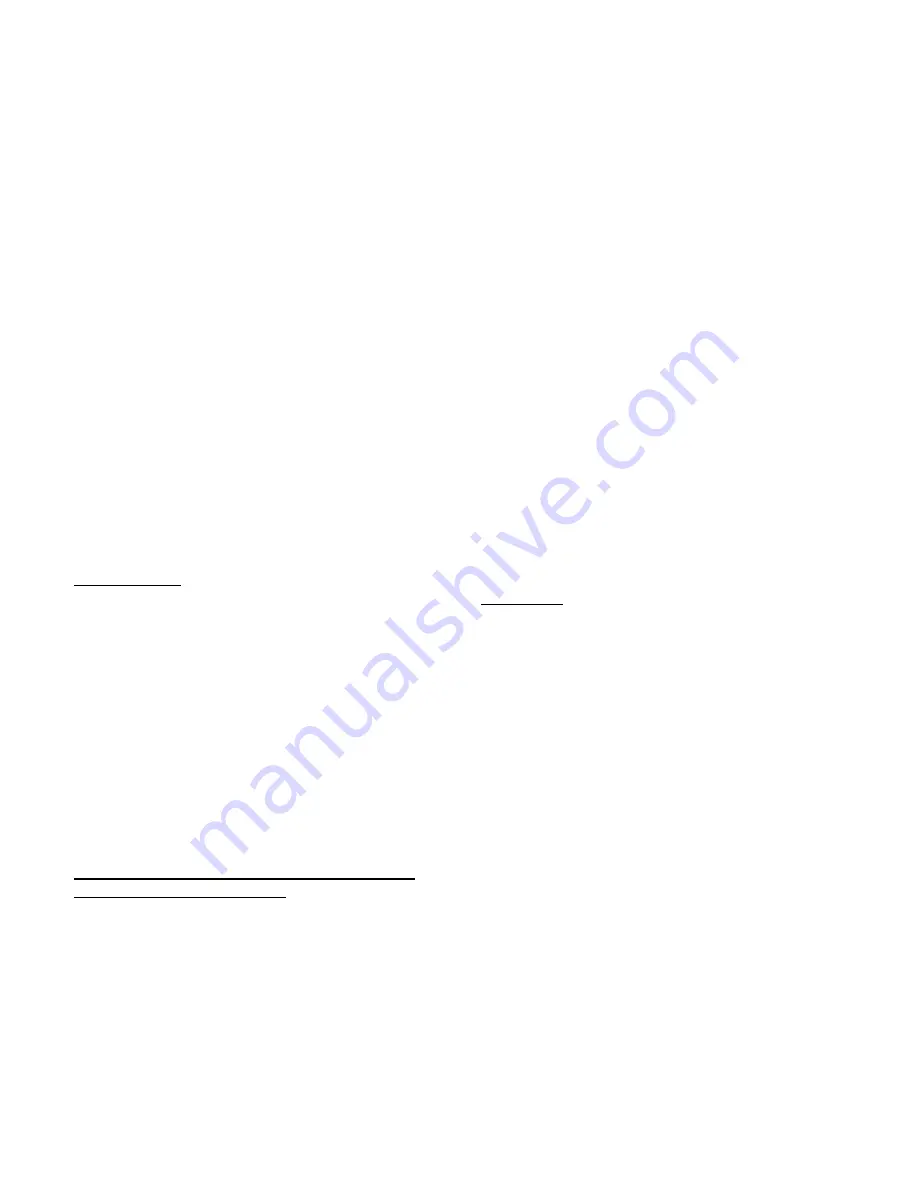
12
Before beginning installation:
•
Check that the product purchased is of a suitable size for
the chosen installation area.
• Check (for transport reasons) that there is no other
supplied material inside the hood (e.g. packets with
screws (*), guarantees (*), etc.), eventually removing
them and keeping them.
•
If possible, disconnect and move freestanding or slide-in
range from cabinet opening to provide easier access to
rear wall/ceiling. Otherwise put a thick, protective
covering over countertop, cooktop or range to protect
from damage and debris. Select a flat surface for
assembling the unit. Cover that surface with a protective
covering and place all canopy hood parts and hardware
in it.
•
In addition check whether near the installation area of the
hood (in the area accessible also with the hood mounted)
an electric socket is available.
• Carry out all the masonry work necessary (e.g.
installation of an electric socket).
Expansion wall plugs are provided to secure the hood to most
types of walls/ceilings. However, a qualified technician must
verify suitability of the materials in accordance with the type of
wall/ceiling. The wall/ceiling must be strong enough to take
the weight of the hood.
Do not tile, grout or silicone this
appliance to the wall. Surface mounting only.
Extractor version
Built-in installation
1) In the event of the built-in version, the stainless steel cover
must be removed (fig. 6).
2) Draw the holes in order to install the product in the solid
ceiling (Fig.3).
3) Drilled the holes marked previously with an 8mm diameter
drill bit and fit the holes with the plugs and threaded bars
provided.
In the built-in version it is possible to choose the air outlet
side.
The product has been designed with the motor outlet on the
short side, however the motor can be rotated in order to move
the air outlet
to the long side of the hood.
In the event that you intend to use the air outlet on the long
side of the hood, proceed as follows:
- Open the glass panels by pulling them gently as shown in
fig. 1
- Remove the grease filters.
- Remove the two screws shown in figure 7.
- Remove the lower sheet metal panel, as shown in figure 8.
- Remove the screws fastening the motor, as shown in figure
9.
- Open the hole in the central part of the long side of the hood
(fig.10)
- Fasten the sheet metal cap provided, to close the hole where
the extraction motor was located previously, using the screws
provided (fig. 11).
- Install the motor in the holes open previously, fastening it
with the two screws removed beforehand (fig.12).
Once the motor has been rotated, proceed with the installation
as follows:
4) Move the hood near the ceiling and feed the power cable
through the relevant passage (fig.2).
5) Fasten the hood to the ceiling using the relevant threaded
pipe provided as per fig. 4
NOTE = The threaded pipe must be inserted immediately after
inserting the “C”-shaped metal bracket, as shown in fig. 4.
NOTE = The distance of the hood from the ceiling can be
adjusted according to how much the threaded pipes are
tightened.
6) Make the electrical connection inside the metal power
supply box, contained in the product (fig. 5)
7) Connect the air extraction pipe in correspondence of the
motor air outlet.
NOTE = In the event of selecting the air outlet on the short
side of the hood, the pipe can be fastened easily by removing
the cover shown in
fig. 13.
Important: The false ceiling (plasterboard) must remain above
the widest flat metal part of the hood fig. 14
Construct a structure capable of supporting the weight of the
false ceiling, which must not be supported by the hood.
Filter version
Free standing
Attention: The power cable must be fed through the relevant
openings shown in fig. 2.
1) Draw the holes for fastening the hood in the solid ceiling, as
shown in fig. 3
2) Drill the four holes using an 8mm diameter helical drill bit.
Insert the plugs in the drilled holes and install the threaded
bars.
3) Open the glass panel by pulling it gently as shown in fig.1
4) Remove the grease filters.
5) Move the hood near the ceiling in order to insert the
threaded bars in the circular holes on the four corners of the
hood, feed the power cable
through the relevant passage (fig. 2)
6) Fasten the hood to the ceiling using the relevant threaded
pipe provided as per fig. 4
NOTE = the threaded pipe must be inserted immediately after
inserting the “C”-shaped metal bracket, as shown in fig. 4.
7) Make the electrical connection inside the metal power
supply box, contained in the product (fig. 5).
8) Install the active carbon filters, which can be purchased
separately, in the relevant housing immediately above the
grease filter.
9) Restore the grease filters and close the glass panel.
Содержание Etoile
Страница 2: ...2 ...
Страница 3: ...3 ...
Страница 4: ...4 ...
Страница 163: ......
Страница 164: ...LIB0103358C Ed 03 16 ...



